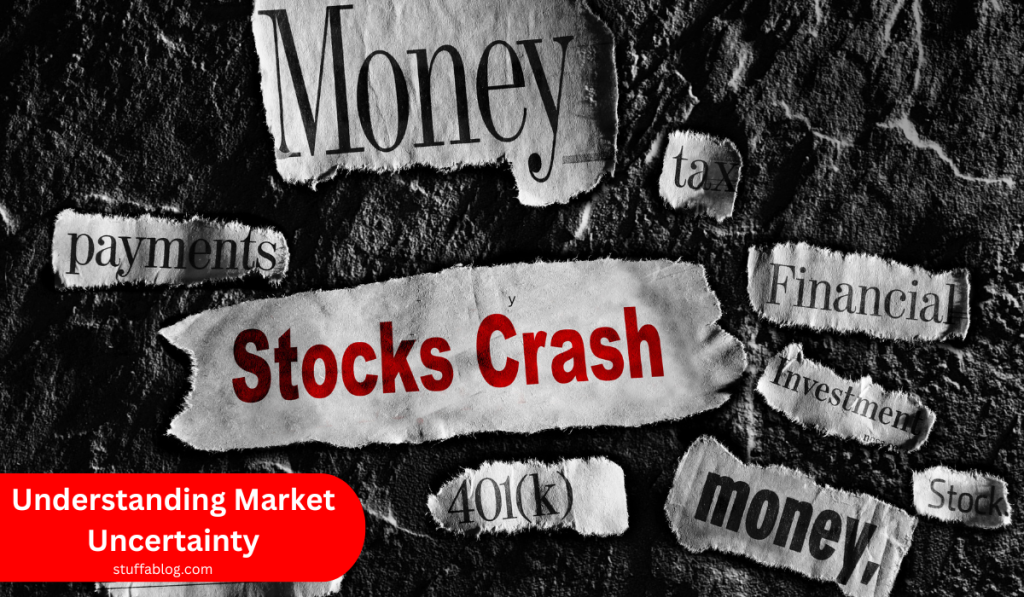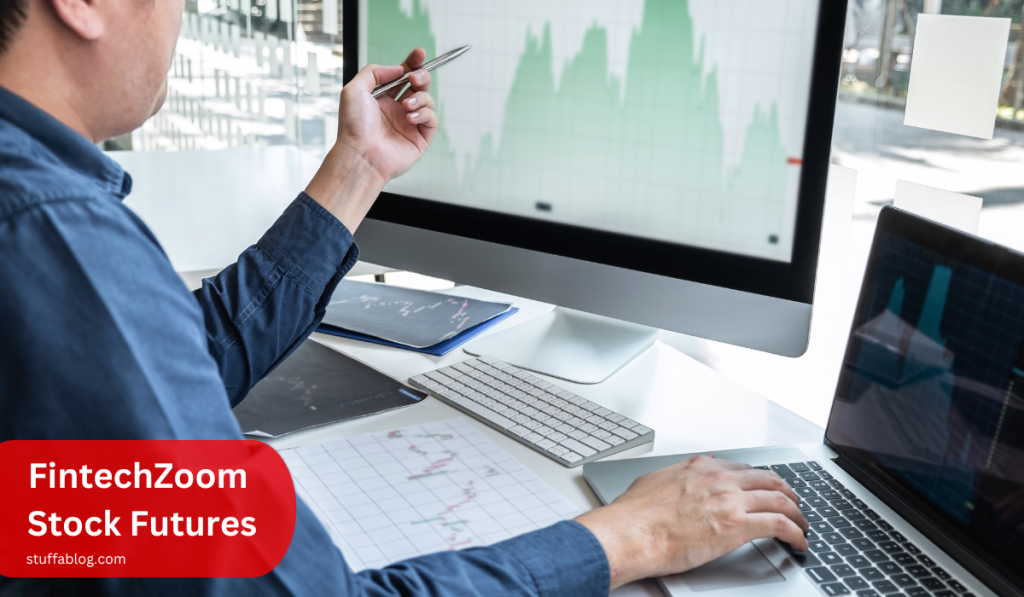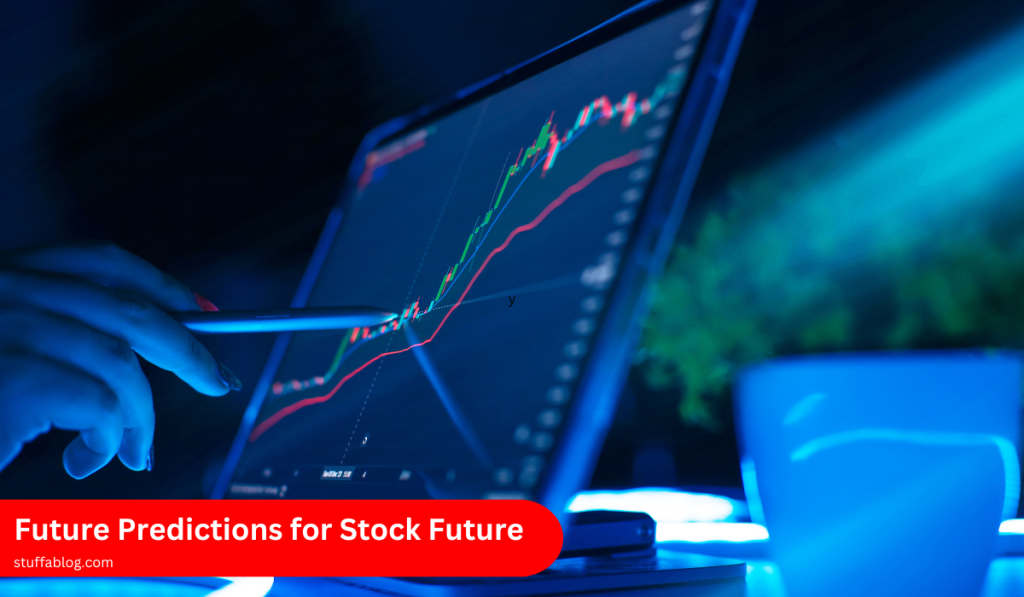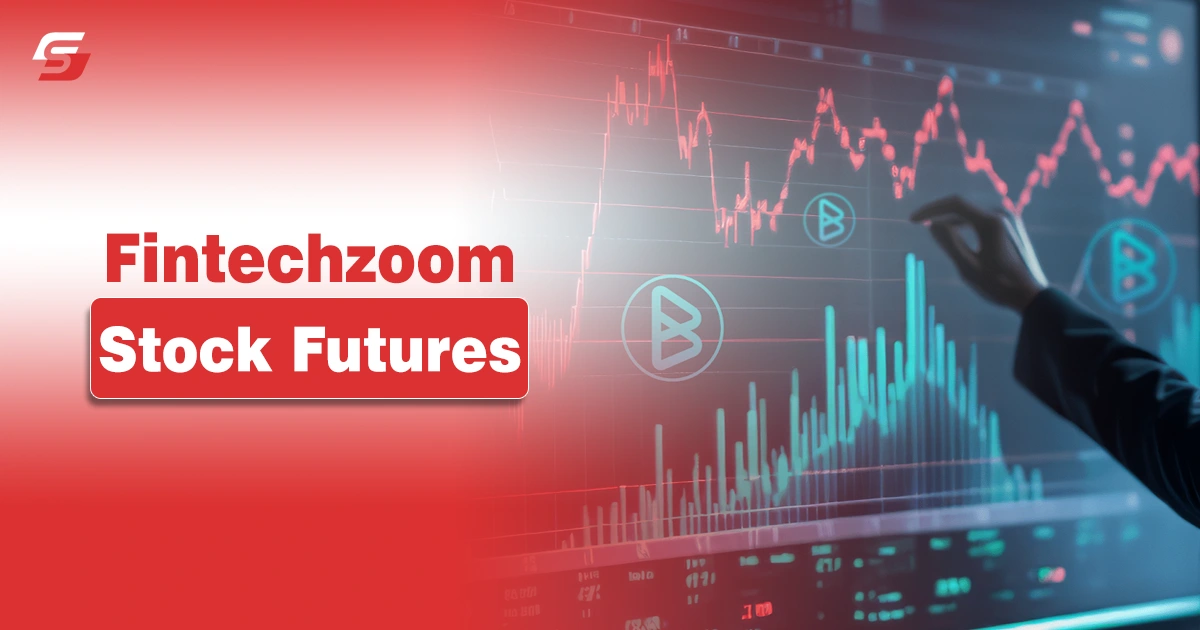Fintechzoom Stock Futures are a lucrative instrument for those who sell or buy a stock for a predetermined price in the future. These kinds of contracts can help merit managers in their line of work particularly in the ever-changing valuations of stocks. Investors can keep themselves protected against uncertain changes in the market by setting prices ahead of time and planning ahead.
Getting accustomed to Fintechzoom Stock Futures Contract is yet the most crucial factor to contemplate for the trading minded. Those who make use of these contracts to defend investments without actually being in possession of the stock take an entirely different approach and this method is, in fact, referred to as a contract for the difference.
Basically, when you pay a small margin amount now, you are obtaining effective leverage as the instrument might move in your favor in the future. Technical indicators are good tools to use in interpreting futures of stocks in the market.
What Are Stock Futures?
Stock futures are contracts to buy or sell a specific amount of a stock at a predetermined price at some later date. Sometimes they act as a hedging instrument to protection or speculate on future price movements.
Economic forecast tools provide the opportunity to lock in prices, therefore, fulfilling your hedging expectations. Investor horizons become broader when they look for instruments that help them take advantage of trading in contracts with other parties that reflect short to long contracts.
This indirect arrangement is the only way that the buyer can take advantage of the price drop in an otherwise possibility of loss. Futures contracts are a way to buy a stock without clear ownership of the stock. To start, only a small margin is involved. When trading, one should see every detail with clarity as if it is in investment planning.
1. The Role of Fintechzoom in Stock Futures Trading
Fintechzoom is that platform that gives out important and knowledgeable recommendations about stock futures. Through such a medium, traders and investors can easily avail themselves of a range of both chart analysis and trading indicators that will give them an edge in the market.
Features of Fintechzoom
Fintechzoom offers analytical tools for the stock market. Here are the high points:
- Data Analytics: It is the means through which stock prices are tracked for some period of time.
- Market Predictions: Users can get to know predictions by analyzing historical data.
- Trading Signals: The system will warning or inform users of buying or selling opportunities.
These features have a significant impact on the development of your trading skills and that is what gives you an edge. Having the correct data on your mobile devices, it is easier to spot good deals.
2. Top Gainers, Losers & Most Active Stocks – Live Market Updates

3. Understanding Market Uncertainty
Volatility, economic fluctuations, and surprising news events are the reasons stock futures are affected by market uncertainty. Gaining an understanding of these elements, the volatility of futures, and different possibilities all help traders a lot in order to build a good strategy.
Types of Market Uncertainty
Market uncertainty takes on a variety of forms including economic indicators, global events, and geopolitics. These are the factors that directly influence the level of confidence that the investor has and at the same time, determine the price swings in the futures markets.
- Economic Outlook: Unemployment rates, growth of GDP and inflation are the key elements.
- Global Occurrences: The events include political instability, natural disasters, or a sudden shift in government policies that can greatly affect the market supply and demand.
The traders should be updated with these parameters for them to make meaningful guesses that are very essential to the trading strategies of Fintechzoom Stock Futures in the competitive market.
4. Strategies for Making Profit
Having solid methods to trade stock futures when the market is uncertain is crucial. Take a look at the practical approaches that these traders can employ to become successful.
Hedging Strategies
The meaning of hedging is the process of preserving one’s investments. Traders can always implement hedging techniques to save themselves from potential downsides that are related to the negative movements of the market. For example, one can buy futures to attack potential losses in stock portfolio.
Common Hedging Techniques:
- Long Hedge: Buy futures for locking-in future supply prices.
- Short Hedge: Sell contracts to protect yourself against commodity price downgrades.
Using risk-mitigating strategies, you can easily feel the securities, so your investments will always be in a secure zone, even when the market situation is upside-down.
Speculative Trading
Profit making is a central focus of speculative trading strategies that aim to make the most out of market fluctuations. The method lies in anticipating price fluctuations and is, in actual practice, to the advantage of short-term trading, which is notably the most popular among traders. Rewards and risks are indeed two sides of one coin.
The investors detract from the fact that, first of all, they must risk their own capital. Here is what you will confront if you choose speculative trading:
- High Volatility: Markets can be very unstable. One day might be extremely good, and the next can cause a nervous breakdown of the entire population
- Decision Tiredness: Continuously, these calls can amass a massive impact on the trader’s mental state.
Including Fintechzoom Stock Futures in speculative strategies gives traders information that helps them make sound decisions and allows them to focus on market opportunities.
5. Risk Management Techniques
The success of futures trading is closely related to the successful management of risk. How to protect yourself may be a nail-biting situation, and risk management comes to the rescue.
Sorting Stop-Loss Orders
This way is excellent to minimize losses. Traders put stop-loss orders so the system can sell out the position at the already set price in case the course continues to fall. This is just the case when when you fall off the bike and your helmet does not allow you to be injured.
Best Practices:
- Select Appropriate Levels: The most suitable level one might choose could be concluded by studying older data.
- Review Regularly: Every so often, alter your stop-loss orders in line with the market conditions.
The well-set stop-loss can prevent huge problems causing an intensive breakdown.
Diversification
Mixing of investments is a prudent risk management strategy. The process of diversification involves offsetting possible losses through investing in various asset classes. One approach which one can use to pair these stocks with different commodities and even real estate properties.
As a result, if one deviates, the remainder can remain steady, the commercial portfolio can be balanced, thus optimizing diversified investment.
6. Analyzing Market Trends
Understanding market trends gives the trader valuable tools in forecasting how the price may move while testing for the most probable outcome. Mastering the art of buying or selling shares in the futures market can mean the difference between a successful and an inactive trader.

Technical Analysis
Technical analysis is a method that traders use to forecast the future movements of the prices of the asset(s) by analyzing past market data, mainly price charts and volume. Traders use this method by displaying graphs of prices and/or indicators. It is helpful when traders want to make predictions based on patterns and when they estimate to see certain trends.
Some popular tools for technical analysis are:
| Tool | Description |
| Moving Averages | Smooth out price data and show trends. |
| Relative Strength Index (RSI) | Shows the rate of a price moving over time. |
| Bollinger Bands | Highlights the volatility and the levels of overbought/oversold |
These tools assist them in making their technical interpretation more accurate. It is easy to understand and interpret technical indicators through the application of these tools.
Fundamental Analysis
Fundamental analysis is the method for investors to calculate the intrinsic value of a company’s shares by economic indicators and company performance metrics. This analysis includes examining various parameters, such as profit, growth of earnings, and general state of the economy.
The major things to look at are:
- Earnings Reports: Analyze quarterly performance to see future profitability.
- Economic Indicators: Watch inflation rates, GDP growth, and interest rates for the latest.
When a trader learns to integrate technical indicators and fundamental analysis he/she will have a complete picture of the stock market. By that, the trader can venture into trading stocks with the help of Fintechzoom Stock Futures.
7. Psychological Factors in Trading
The deal is mainly as much as it is about mental strength, correct strategic plans, and better insights in market. The working of trading is mainly dependent on human psychology, which is the championship winner in this super-league tournament.
Managing Fear and Greed
Emotions can make traders rush to make decisions they will later regret. Fear, when the market is in a slump, can force you to sell in haste, while greed will lead one into making poor decisions. In the trading sector, there is an onus on the professionals to channel their emotions away from the markets unless it is a question of strict profitability.
Tips for Emotional Regulation:
- Set Profit and Loss Targets: Determine preliminary conditions such as when to close the transaction in order to follow a logical ration of decisions.
- Stay Informed: Information is the best way to fend off panic and give you assurance you’ve made the right decision
- Keep a Trading Journal: Self-analysis helps in that through the writing of thoughts, analyzing existing triggers, or behavior modification we realize if we trade properly.
Traders, who deal with their emotions wisely will be able to build a strategy and stick to it despite daily fluctuations in the market.
8. The Impact of Global Events on Stock Futures
Major global events are impactful in creating a shift in market dimensions. The abrupt changes in the markets are most of the time caused by an economic policy change, geopolitical unrest, or suddenly arising crises in the stock futures market.
Case Studies of Market Reaction
Special incidents in history make a researcher identify how the markets react in face of unforeseen shocks.
- COVID-19 Pandemic: Market volatility skyrocketed, with indices crashing initially, only to recover with unprecedented government intervention and fiscal policy changes.
- Brexit Vote: The announcement led to massive fluctuations in the British pound and impacted stocks across European markets.
The case studies actually stress the importance of watching the major news to be in the swim about global events because they can change the prediction while we want it for Fintechzoom Stock Futures in a click.
9. Tools and Resources for Traders
Guiding commerce through the use of good tools is the main strong point of people involved in this trade. Let us now detail some very needed instruments.
Recommended Trading Platforms
Here are some efficient platforms that facilitate futures trading effectively:
| Platform | Features |
| TD Ameritrade | Detailed knowhow of the sector and support resource which quicken your endeavors. |
| E*TRADE | Educational resources and also user-friendly while it is not only powerful. |
| Interactive Brokers | They offer one of the lowest fees, global products, and efficiency in execution. |
This does the job as it indeed increases the trading experiences of the ones that use this efficient platform.
Educational Resources
If someone wants to delve deeper into the subject there are various educational resources available. They can get enrolled in a course in Udemy and Coursera of which also offer webinars to let them enjoy a structured environment for understanding.
If you like to learn further, here are some resources that might help you with your researc:
- Investopedia Academy: This is a complete and detail-oriented piece of education in the scope of finance that will open your ways for outstanding financial management.
- Coursera Offers: A comprehensive financial education that will get you on your path to solid financial management.
An extra effort of investing time in educational pursuits pays off when the real task of making a trading decision arises.

10. Future Predictions for Stock Futures
Future contracts in stock futures involve analyzing data and present market indicators to speculate on other future trends.
Expert Opinions and Forecasts
Normally, pros in the line of stock futures analysis give briefings enlightening the traders on where prices are most likely to go next. The main producers of the stocks such as the energy and technology sectors are those, which experience changes as a result of recovering economy political interference changes.
For instance, experts predict that Fintechzoom Stock Futures will be a breakthrough niche because of the growing demand for technologies and trading platforms that are totally digital.
Current Market Predictions
Currently, the most important indicators that need observance are inflation rates, employment statistics, and corporate reports of gains targeting different industries.” These parameters are not only for obtaining market data but will as well form the foundation on which the future price movement will be based.
The efficacy of the given parameters is guaranteed to bring about the realization of the entire techniques hence engaging with the market when it is favorable or deciding to keep on keeping is made.
Sum Up
In today’s complex financial times, the futures market is one of the most significant aspects that any investor or trading professional should master. Working together with Fintechzoom Stock Futures, one can utilize data and analytics to improve one’s business and to be able to trade successfully during volatile times.
The accumulation of practical risk-protecting techniques, the development of emotional intelligence, and the understanding of both technical and fundamental analysis are the crucial aspects of any trader’s career.
Whether you are a seasoned investor or just starting out, steady monitoring of market trends, together with intelligent trading, if well implemented, can bring you the desired success. Knowledge is power, and the more you attain the higher the chances even in making those tough-to-decide win-win decisions.
Frequently Asked Questions (FAQs)
Can ChatGPT predict stock prices?
No, ChatGPT can displume as a rather user-unplanned rule whenever developing market buzz
What are future stocks?
Obtaining future stocks means that a dealer has purchased or sold the stocks at a fixed price on the way forward.
How to buy Ideanomics stock?
So as to buy or sell stocks an investor needs to open an account in the brokerage first, then fund it before using the trading platform to complete the transaction.
What is DAX futures?
A DAX future, alternatively often called a DAX future contract, is a better way to express the so nicknamed, DAX index’s performance which covers 40 large German corporations that have been listed on the Frankfurt Stock Exchange.
What are stock futures used for?
Stock future contracts provide a chance for hedging, speculation for a potential price movement, and besides other trading strategies for managing funds well.
How do I start trading stock futures?
The very first thing to do is to learn about the stock market. A good broker is equally important before you can start trading. Familiarity with your account is necessary prior to getting a grasp of the trading aspects.
What is the minimum investment for stock futures?
Typically, the minimum investment would be around 2,000 units or so, which depends largely on the broker’s requirement.
What are the risks of trading stock futures?
Stock holding in the virtual market can be a source of risk with the following risks being linked to the above-mentioned trading strategy since the current environment is characterized by uncertainties and rapid changes.
Can beginners trade stock futures successfully?
Yes, a beginner in the realm of future stock trading can fairly profit from the moderate leverage on demo accounts and switch to the actual market conditions much later.
What is margin in stock futures trading?
Buying or selling a stock future requires a deposit to the clearinghouse to collateralize the trade. The proportional amount called margin is a form of security insurance for the seller banking to account for the potential loss.


